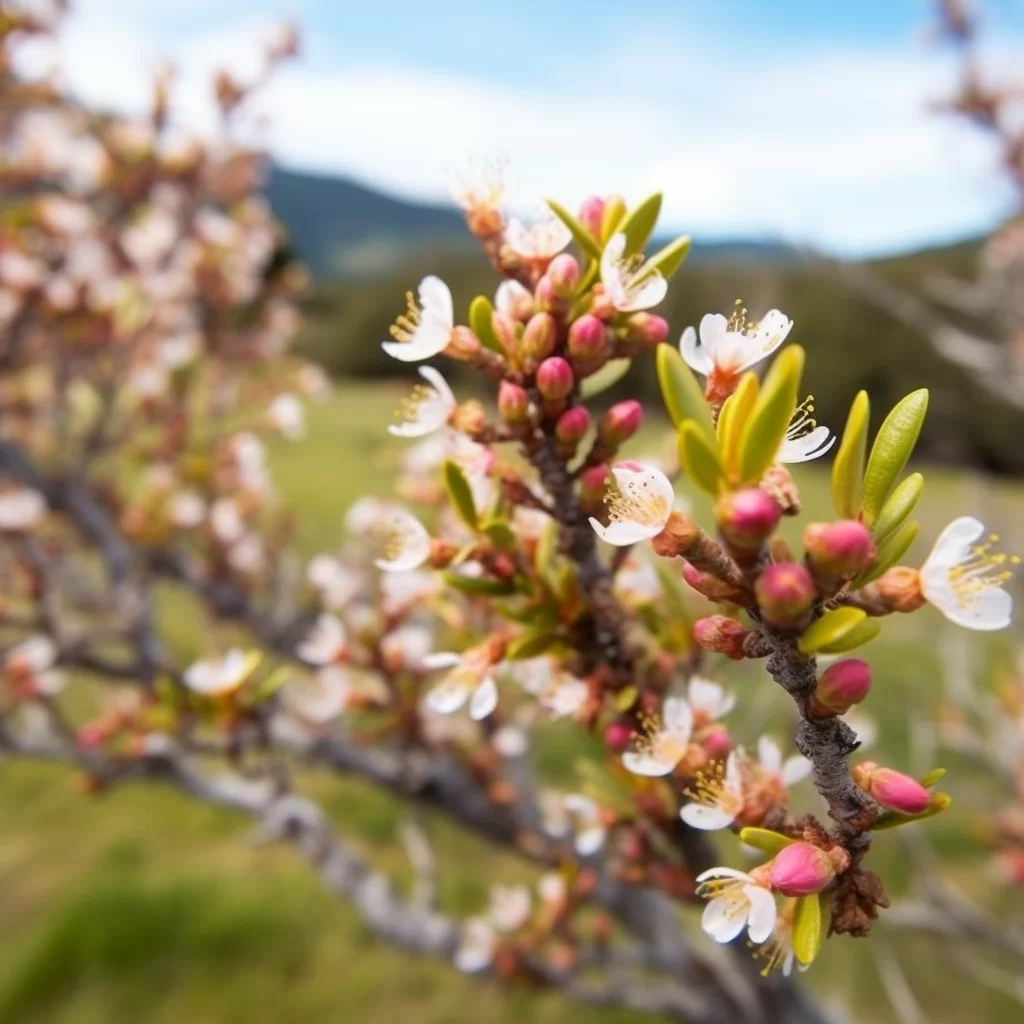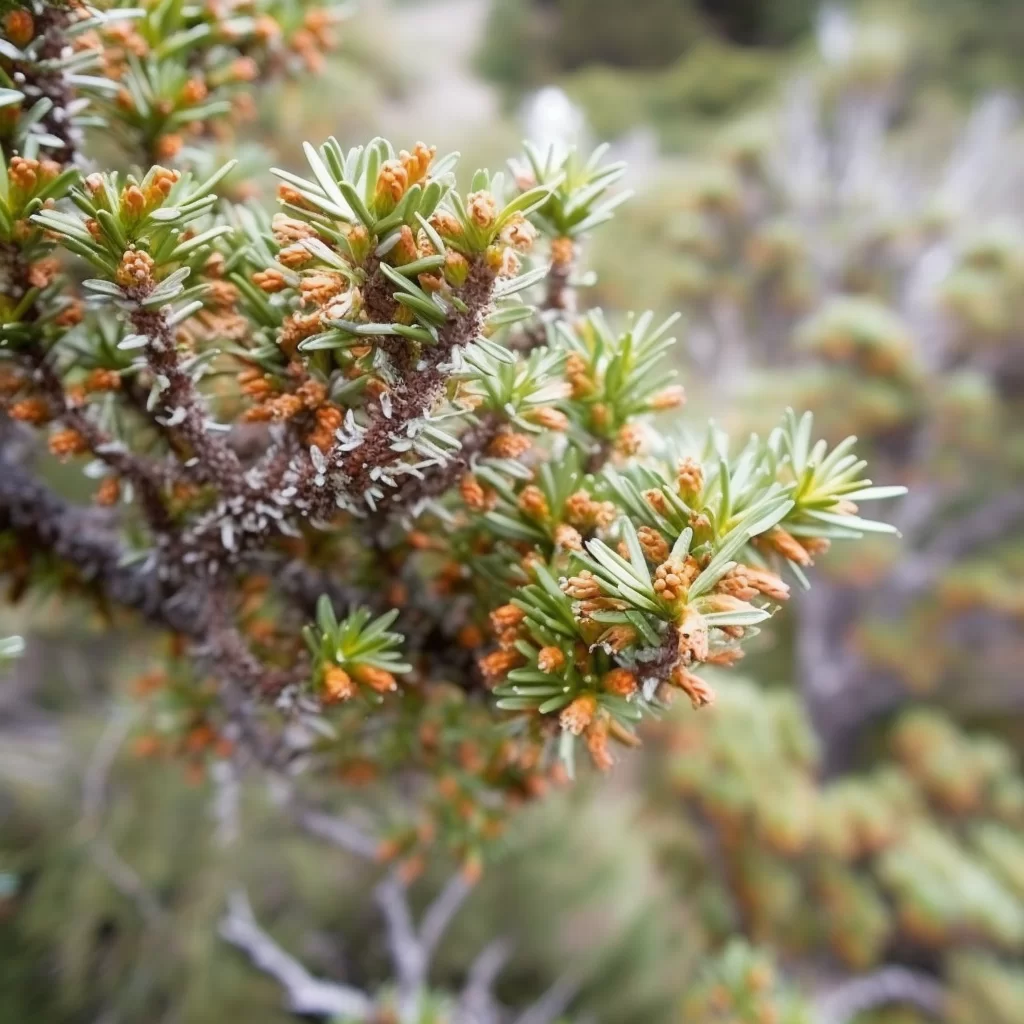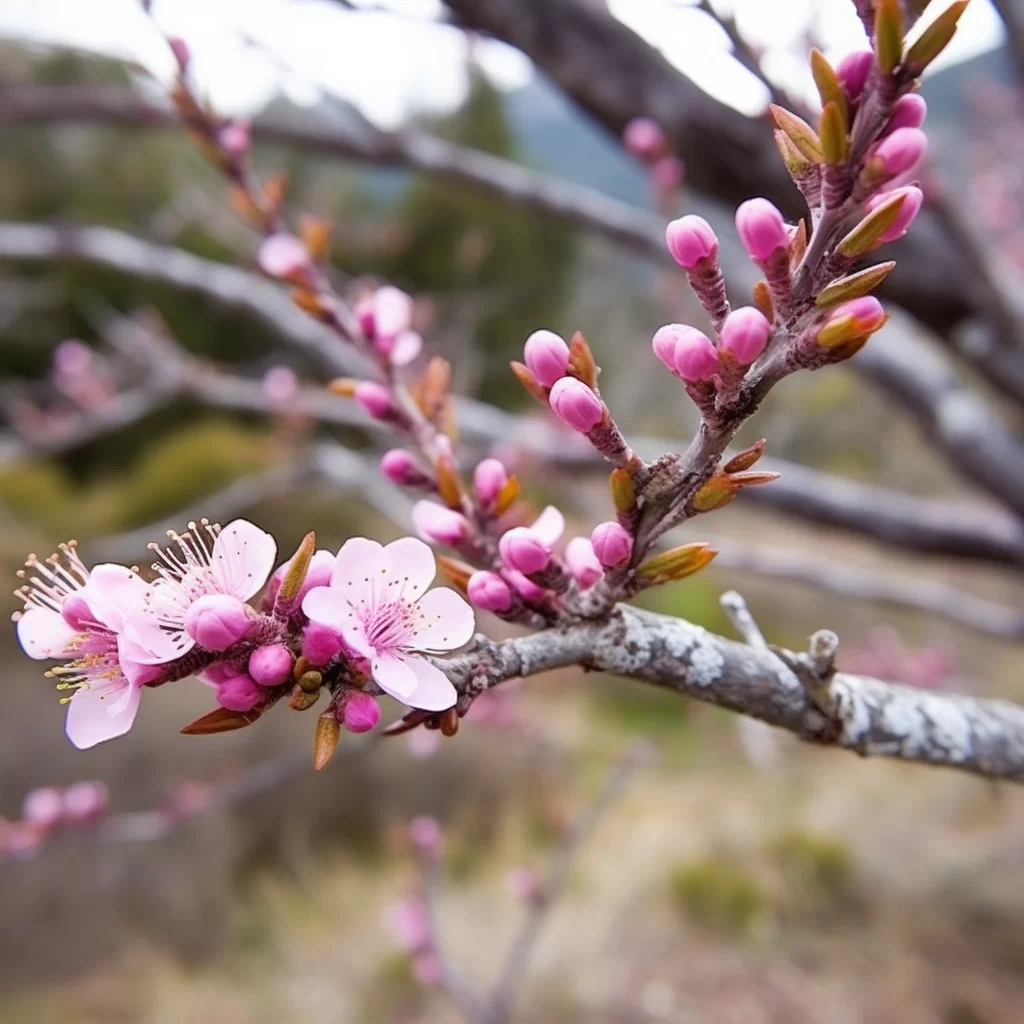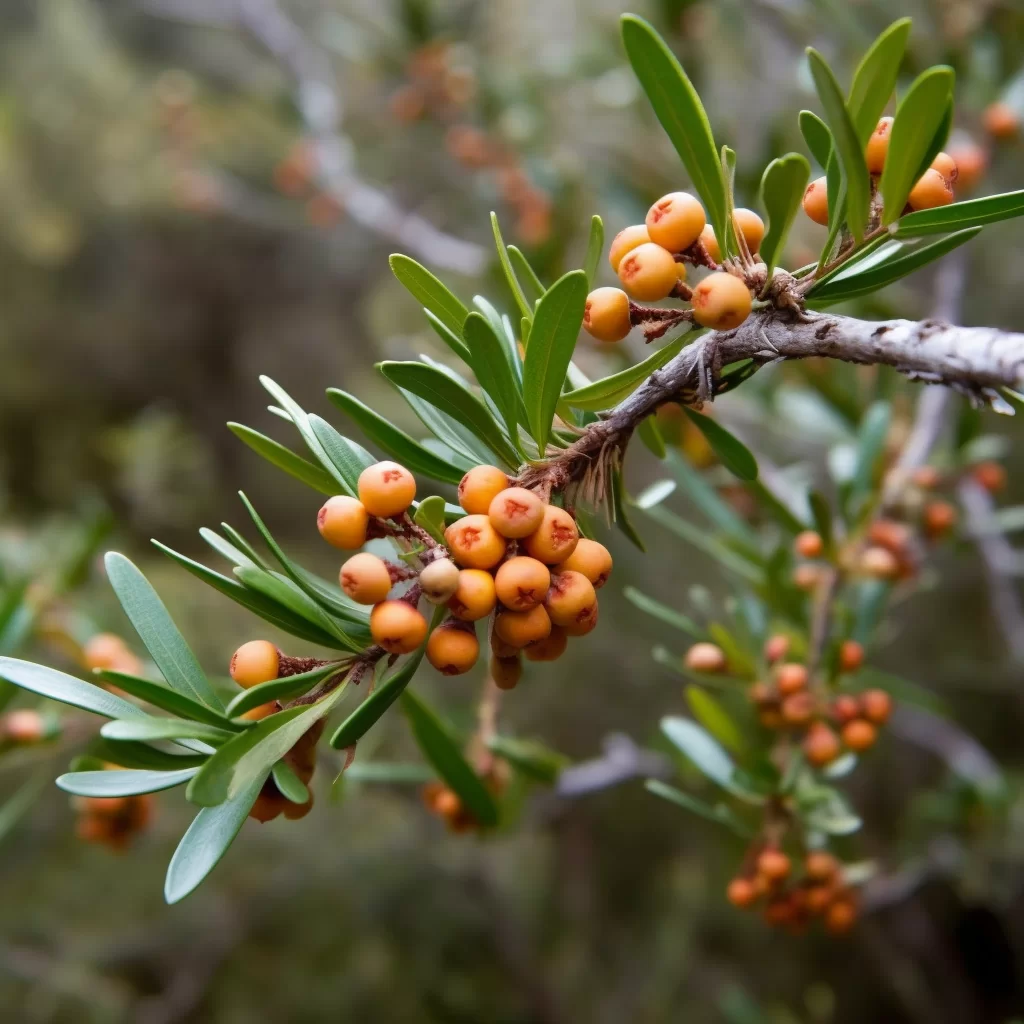Story of Day :
Contents
The Manuka Plant: The Complete Guide and Care Tips
Gardeners are constantly on the hunt for fresh greenery to enhance their outdoor spaces.
Recently, one plant that has been gaining traction is the manuka plant, also referred to as Leptospermum scoparium.
This unique shrub hails from New Zealand and boasts a plethora of advantages for both gardening aficionados and those who want to harness its medicinal properties.The manuka plant has become a must-have for garden enthusiasts worldwide due to its aesthetic appeal and resilience.
It’s an evergreen species that thrives in various soil types and can handle full sun or partial shade with ease.
The manuka’s vibrant flowers bloom in shades of pink, red, or white, making it a standout addition to any garden’s floral bounty.
In addition, this versatile shrub is known for its healing properties as it produces potent honey that is rich in antioxidants with antibacterial and anti-inflammatory effects making it suitable for treating wounds or sore throats amongst other ailments.
What is a Manuka Plant?
The manuka plant is an intriguing species that belongs to the myrtle family.
It can grow up to 10 meters tall, but it often remains a small shrub, reaching about 2-5 meters in height.
The leaves of this plant are relatively petite with narrow and pointed shapes.
A unique feature of the manuka plant is its delicate white or pink flowers that blossom from spring through summer, making it a delightful sight for nature lovers. Apart from its beauty, the manuka plant has been known for its significant medicinal value for centuries.
Apart from its beauty, the manuka plant has been known for its significant medicinal value for centuries.
It has antibacterial and anti-inflammatory properties that have long been used in traditional medicine to treat various ailments such as sore throat and colds.
The essential oils derived from the leaves and flowers of this species are also used in skincare products due to their healing properties that help soothe irritated skin conditions such as acne or eczema.
Overall, the manuka plant’s versatility makes it a valuable addition not only aesthetically but also medicinally within our natural environment today.
The Benefits of Growing a Manuka Plant
- Attracts bees – Manuka plants produce abundant nectar, making them an attractive food source for bees.
- Drought-tolerant – Once established, manuka plants require little watering which makes them ideal for dry regions with occasional rainfall.
- Easy care – With minimal maintenance requirements, this plant is easy to grow even by inexperienced gardeners.
- Aromatic scent – When crushed or brushed against the leaves emit a sweet aroma which makes it great in aromatic gardens
- Medicinal properties – The honey derived from manuka flowers has antibacterial properties hence used in treating wounds and other skin conditions like acne
If you’re interested in growing a healthy Manukua plant, there are certain care tips you should follow.
First and foremost, make sure it gets enough sunlight.
These plants thrive in bright, direct light so find a spot in your home or garden where it can soak up some rays.
Secondly, be mindful of watering.
Manukua plants need to be watered regularly but make sure the soil has drained properly before watering again to avoid root rot.
Additionally, fertilizing the plant once every month with a balanced fertilizer will help it grow strong and healthy.To keep your Manukua plant thriving for years to come, you should also prune its branches occasionally and repot the plant every two years or so.
Pruning ensures that the plant keeps its shape while repotting allows for fresh soil and room for growth.
Lastly, keep an eye out for pests such as mealybugs or aphids which can harm your Manukua plant’s health if left unaddressed! Overall, with proper care and attention to these tips – plenty of sunlight, regular watering and fertilization along with pruning/repotting when necessary – growing a healthy Manukua is achievable!
If you’re planning on growing a manuka tree, there are some key things to keep in mind to ensure it thrives.
First and foremost, make sure your manuka is getting enough sunlight.
These trees love bright light and do best in areas with full sun exposure or partial shade at most.
Secondly, be mindful of the soil quality – manukas prefer well-draining soil with a pH between 4.5-6.0 for optimal growth.
It’s also important to water your tree regularly (especially during dry spells) and provide it with fertilizers that contain phosphorus and potassium.In addition to these basic care requirements, pruning can also help keep your manuka healthy over time.
Regularly trimming back any dead or damaged branches will promote new growth and prevent disease from spreading throughout the tree.
Additionally, be watchful for any signs of pests or infections such as leaf spots or blight – prompt treatment is key for keeping your plant healthy in the long run! With these tips in mind, you’ll be well on your way to growing a thriving manuka tree that adds beauty (and potentially medicinal benefits) to your outdoor space!
Sunlight Requirements
Apart from requiring well-drained soil, the manukua plant needs at least 6 hours of direct sunlight daily.
A location with full sun is ideal when growing this plant.

Watering
When you first start growing the manuka plant, it’s important to give it frequent watering during its first year.
This will help establish a healthy root system that can later support the growth of a strong and vibrant plant.
However, once the manuka plant is established, you can reduce your watering schedule as this species is known for its drought-tolerance qualities.
In fact, this makes it an ideal choice for gardeners living in areas with occasional rainfall where regular irrigation may not be practical or possible.In essence, the manuka plant adapts well to different environmental conditions and can thrive even in less-than-ideal circumstances.
Its ability to tolerate drought means that you won’t have to worry about constantly monitoring its water needs or providing excessive amounts of hydration once it has matured.
Instead, by focusing on proper care during those early stages of growth when moisture is critical for establishing a healthy root system, you’ll set yourself up for success with this versatile and resilient species!
Soil Type and pH

The manuka prefers well-draining acidic soils that have a pH ranging between 4.5 to 7.0.
You can adjust soil pH by mixing sulfur or aluminum sulfate before planting your tree.
Pruning a Manuka plant is an important task that helps to keep the plant healthy and promote its growth.
Manuka plants are known for their beautiful white or pink flowers, and they require minimal maintenance.
However, pruning ensures that the plant grows in the desired shape and size while also getting rid of any dead or diseased branches.
The best time to prune a Manuka plant is during early spring when new growth appears, but it can also be done in late summer after flowering has ended.To properly prune a Manuka plant, one should first assess the shape of the shrub and identify any unwanted branches.
Then using sharp pruning shears, cut off any dead or diseased branches at their base.
It’s essential to ensure clean cuts as this reduces chances of infection on the remaining parts of the shrub.
Additionally, thinning out crowded areas encourages airflow within the shrub reducing disease problems too; furthermore it helps in promoting new growth by removing all crossing stems which hinders from reaching full potential.In conclusion, pruning your Manuka plants regularly enhances their overall health by preventing disease outbreaks while also keeping them looking neat and tidy all year round; therefore making them perfect for landscape decoration too! Furthermore following these simple steps would result in having attractive blooms with fuller foliage every season which will leave you feeling accomplished as a gardener!
If you want your plants to stay healthy and in good shape, it’s essential to prune them regularly.
Pruning is a process where you trim the branches of a plant to remove any dead or diseased parts.
This allows the plant to grow stronger and faster as well as preventing any further damage.
Early spring is an ideal time for pruning since it’s before new growth starts, allowing your plants plenty of time to heal before they start growing again.
By taking care of your plants through regular pruning, you’ll be rewarded with a lush and healthy garden all year round.Pruning is not only beneficial for maintaining the health and shape of your plants; it also helps improve their overall appearance.
When done correctly, pruning can make your garden look more beautiful as well as enhancing its aesthetic appeal.
It involves removing any unwanted or unsightly growths that may be affecting the symmetry or balance of your plants while also promoting air circulation around them which reduces disease buildup.
So whether you’re planning on growing vegetables or flowers in your garden, remember that regular pruning will help ensure their health and beauty for years to come!
- Remove any dead or diseased branches first
- Cut off any weak or crossing branches that hinder airflow and light penetration within the foliage
- Trim back any overgrown stems to control the size of the tree or shrub.
Manuka plants are known for their medicinal properties and are an essential source of honey production.
However, they are susceptible to various pests and diseases that can damage the plant’s growth, health, and ultimately its productivity.
Some of the common pests that attack Manuka plants include psyllids, aphids, thrips, mites and scale insects.
These pests cause distortion or discoloration of leaves by sucking sap out of them.
Diseases such as Manuka blight and Myrtle rust can also affect Manuka plants leading to visible signs such as yellowing or browning of leaves which eventually fall off.To prevent these problems from occurring in Manuka plantations it is important to undertake regular monitoring through inspection with attention given particularly during the flowering season when pests tend to be more active.
Additionally, ensuring proper irrigation practices in dry periods aids in keeping foliage healthy while also providing a healthy environment for beneficial insects that help deter pests naturally.In conclusion, for farmers who want to cultivate healthy manuka plants it is necessary to be aware of common threats such as insect pest infestations and disease outbreaks; but with proper management techniques including prevention measures like regular monitoring & watering schedules along with investing in quality pesticides when necessary will safeguard crops while maintaining yield quality year after year despite any challenges posed by Mother Nature!
If you’re planning on taking care of Manukau plants, it’s important to be mindful of potential pest and disease attacks.
Pests such as mealybugs, whiteflies, and scale insects can easily infest the plant and suck the sap from leaves, which results in them turning dry and yellow.
Additionally, aphids can also be a common pest if left uncontrolled.
Powdery mildew is another issue that often arises in humid climates where powdery white patches appear on leaves and stems.
This type of disease leads to stunted growth in the plant.
Furthermore, fungal diseases like Cylindrocladium blight cause leaf spots that eventually spread across the entire leaf surface killing all foliage on an infected branch.To avoid these issues with your Manukau plants, it’s essential to keep an eye out for any signs of pests or diseases regularly.
You can also take preventative measures like pruning away any dead or damaged branches to prevent further damage to healthy parts of your plant.
Additionally, using natural remedies such as neem oil or insecticidal soap can help control pests before they become a more significant problem for your Manukau plants.
Remember that proper care will ensure healthy growth for your plant while keeping unpleasant pests and diseases at bay!
Conclusion
If you’re looking for a low-maintenance plant that packs a punch, then the manuka plant is the perfect addition to your garden.
Not only can it survive in most climates with minimal care, but it also boasts a range of benefits.
For starters, this plant serves as an excellent attractant for bees and other beneficial insects.
Additionally, its leaves have medicinal properties that make them ideal for brewing tea or creating aromatherapy oils.Looking beyond its practical uses, the manuka plant is also aesthetically pleasing with its delicate white flowers and glossy green leaves.
Its versatile nature means it can be grown in various settings such as hedges or potted plants on balconies or patios.
With all these benefits combined, it’s no wonder why this humble shrub has become increasingly popular among gardeners worldwide!